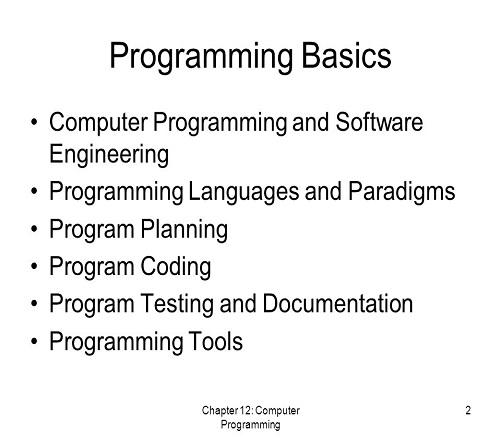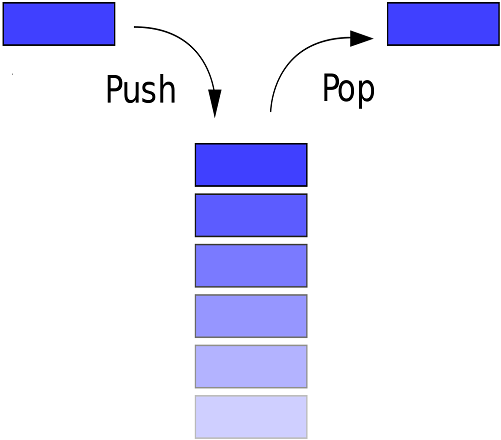How Well Do You Know The Basics Of Software Programming Test?
-
What is the symbol that represents comments in a flowchart?
-
An annotation symbol
-
A flow line
-
A subroutine
-
A procedure symbol
-
Are you a programmer or someone just starting with programming? Did you study computer related courses in the university? Or do you have surface knowledge of software programming? Find how much of a nerd you are by attempting this quiz.

Quiz Preview
- 2.
Which of the following is a logical operator?
-
And
-
+
-
()
-
Correct Answer
A. AndExplanation
The logical operator "And" is used to combine two or more conditions in a logical expression. It returns true only if all the conditions are true, otherwise it returns false. This operator is commonly used in programming languages to make decisions based on multiple conditions.Rate this question:
-
- 3.
Which data structure uses LIFO?
-
Queues
-
Int
-
Stacks
-
Array
Correct Answer
A. StacksExplanation
Stacks use the LIFO (Last-In-First-Out) principle, meaning that the last element added to the stack is the first one to be removed. This is similar to a stack of plates, where the last plate placed on top is the first one to be taken off. In a stack, elements can only be added or removed from the top, making it a suitable data structure for tasks that require accessing elements in a specific order, such as undo/redo operations or function call execution.Rate this question:
-
- 4.
What is a memory location that holds a single letter or number?
-
Word
-
Int
-
Double
-
Char
Correct Answer
A. CharExplanation
A memory location that holds a single letter or number is called a "char." It is a data type in programming languages that represents a single character, such as a letter or a number. It is used to store and manipulate individual characters or small numeric values within a computer's memory.Rate this question:
-
- 5.
Which of the following statements is False?
-
In a flowchart all the necessary inputs should be listed out in a logical order
-
The input, process, output, and display symbols should have only one flow line
-
Flowcharts can have only one start point and one end point
-
The flowchart should be clear, precise and easy to follow
Correct Answer
A. The input, process, output, and display symbols should have only one flow lineExplanation
The statement "The input, process, output, and display symbols should have only one flow line" is false because these symbols can have multiple flow lines to represent different paths or branches in the flowchart.Rate this question:
-
- 6.
Which symbol on a flowchart is used to represent the connection between the portions of a flowchart on separate pages?
-
Flow Line
-
Annotation
-
On Page Connector
-
Off Page Connector
Correct Answer
A. Off Page ConnectorExplanation
Off Page Connector is the symbol used to represent the connection between the portions of a flowchart on separate pages. It indicates that the flowchart continues on another page or a different location within the same page. This symbol helps in maintaining the flow and organization of the flowchart, allowing for a clear representation of the process or system being depicted.Rate this question:
-
- 7.
Which operators are used to test the relationship between two variables or between a variable and a constant?
-
Special operators
-
Logical operators
-
Arithmetic operators
-
Relational operators
Correct Answer
A. Relational operatorsExplanation
Relational operators are used to test the relationship between two variables or between a variable and a constant. These operators include equals to (==), not equals to (!=), greater than (>), less than (=), and less than or equal to (Rate this question:
-
- 8.
Which of the following is NOT a type of algorithm?
-
Decision Table
-
Program
-
Flowchart
-
Pseudocode
Correct Answer
A. Program -
- 9.
What represent algorithms that involve complex decision-making?
-
Decision Tables
-
Pseudocode
-
Programs
-
Flowcharts
Correct Answer
A. Decision TablesExplanation
Decision Tables represent algorithms that involve complex decision-making. They provide a structured way to define and analyze different combinations of conditions and actions. Decision Tables are particularly useful when there are multiple conditions and actions involved, and they help in simplifying and organizing the decision-making process. Flowcharts, Programs, and Pseudocode are also used in algorithm development, but Decision Tables specifically focus on complex decision-making.Rate this question:
-
- 10.
What are x and y called in the following expression (z = x + y)?
-
Literals
-
Operands
-
Values
-
Operators
Correct Answer
A. OperandsExplanation
In the given expression (z = x + y), x and y are referred to as operands. Operands are the variables or values that are used in an expression to perform operations. In this case, x and y are the operands that are being added together to calculate the value of z.Rate this question:
-
Quiz Review Timeline (Updated): Mar 16, 2023 +
Our quizzes are rigorously reviewed, monitored and continuously updated by our expert board to maintain accuracy, relevance, and timeliness.
-
Current Version
-
Mar 16, 2023Quiz Edited by
ProProfs Editorial Team -
Dec 14, 2017Quiz Created by
Jaksiboy
Computer Exam Quiz: Could You Pass?
This Computer Exam Quiz tests foundational knowledge in computer science, focusing on basic programming concepts, historical milestones, and essential technologies. It assesses...
Questions:
15 |
Attempts:
90 |
Last updated:
Mar 22, 2023
|
Take The Computer Science Practice Exam Questions!
Test your knowledge in computer science with this practice exam! Covering key topics like data storage, input devices, and programming concepts, this quiz is designed to assess...
Questions:
50 |
Attempts:
736 |
Last updated:
Nov 16, 2023
|
Fundamentals Final (ch 1-7)
This quiz titled 'Fundamentals Final (ch 1-7)' assesses foundational knowledge in programming, focusing on data types, operators, objects, methods, and method parameters. It is...
Questions:
60 |
Attempts:
204 |
Last updated:
Mar 21, 2023
|
Programming Quiz: Conditional Statements And Strings!
Are you a programmer looking for a trivia quiz on conditional statements and strings? The quiz below is designed to help you see just how much you know about the basic symbols in...
Questions:
15 |
Attempts:
380 |
Last updated:
Mar 22, 2023
|
IT102 Programming Fundamentals: Quiz!
The IT102 Programming Fundamentals: Quiz assesses foundational programming knowledge, focusing on syntax, function usage, and logical structures in programming. Key skills tested...
Questions:
34 |
Attempts:
132 |
Last updated:
Mar 22, 2023
|
Programming Fundamentals MCQ Quiz Questions And Answers
Do you consider yourself a programmer? Do you know everything about programming fundamentals? Then take our brain-wracking programming fundamentals quiz and evaluate yourself....
Questions:
28 |
Attempts:
12512 |
Last updated:
Sep 20, 2024
|
 Back to top
Back to top

















